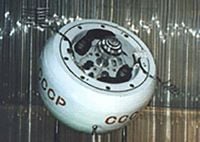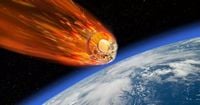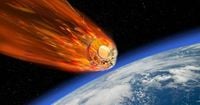After drifting silently through space for over five decades, the Soviet spacecraft Kosmos 482 is on a collision course with Earth. Astronomers predict that this 500-kilogram (1,100 pounds) landing module could re-enter the atmosphere as early as tomorrow afternoon, May 9, 2025. The European Space Agency (ESA) has indicated that the most likely time for re-entry is around 08:34 BST on Saturday, May 10, although there is a significant uncertainty of 14 hours either side of this prediction.
The potential impact zone for Kosmos 482 covers a vast area between latitudes 52 degrees north and 52 degrees south. This means that major cities around the world, including London, Brussels, Vienna, and Phoenix, could be at risk. According to Dr. Marco Langbroek, an astronomer and satellite tracker at Delft University of Technology, the re-entry path could also affect cities like Budapest, Bucharest, Calgary, and even Hiroshima.
"The risks involved are not particularly high, but not zero: with a mass of just under 500 kg and 1-meter size, risks are somewhat similar to that of a meteorite impact," Dr. Langbroek noted in a blog post. While the odds of being struck by Kosmos 482 are relatively low, a direct hit on a populated area could have serious consequences.
Originally launched on March 31, 1972, Kosmos 482 was intended to be part of the Soviet Union's Venera program, which aimed to explore Venus. However, an engine failure left the spacecraft stranded in Earth's orbit, and it has remained there ever since. The spacecraft eventually broke into four pieces, with the landing module being the last remnant still orbiting Earth.
As scientists closely monitor the descent of Kosmos 482, they believe that an object currently hurtling towards Earth at approximately 17,000 mph is its landing module. Professor Patrick Hartigan from Rice University explained, "It could very well hang together as it comes in, as it was meant to survive on Venus, so it is built like a little tank." However, the craft's parachute landing system is expected to have failed after 53 years in orbit, meaning it will descend primarily due to atmospheric friction.
Hartigan estimates that the spacecraft will initially enter the atmosphere at about 8 km per second (17,895 miles per hour) but will slow down significantly before impact, potentially reaching speeds around 150 miles per hour. He compared the impact force to that of a speeding motorcycle, noting that while a collision with a populated area could be deadly, it would not be as catastrophic as an asteroid strike.
Despite the risks, experts emphasize that the likelihood of a direct hit on an individual is quite low. "Statistically, it will probably end up in the ocean, but it might hit land. You'd have to be colossally unlucky to get hit," Hartigan stated. He also pointed out that the craft’s descent is difficult to predict due to factors such as atmospheric drag and the spacecraft's orbit, which changes every 90 minutes.
The history of Kosmos 482 is a reflection of the Cold War era's space race, during which the USSR launched numerous missions to Venus, dubbed Earth’s “twin sister.” Out of 29 spacecraft launched toward the planet, Kosmos 482 is the last remnant still in orbit. The original Venera program was not just a scientific endeavor but also a demonstration of the USSR's technological prowess during a time of intense rivalry with the United States.
In the decades since its launch, Kosmos 482 has become a piece of space junk, but its construction is unique. Designed to withstand Venus's extreme conditions, the landing module is made of titanium, which has a melting point of around 1,700°C. This could allow it to survive re-entry, unlike most other space debris that typically burns up upon re-entry.
Dr. Jonathan McDowell, an astrophysicist at the Harvard-Smithsonian Center for Astrophysics, has reassured the public that the risk of Kosmos 482 causing harm is minimal. He remarked, "You wouldn’t want it bashing you on the head," but emphasized that the spacecraft would hit Earth much slower than a meteorite, with localized damage expected if it does land on solid ground.
As the re-entry approaches, scientists are preparing for various scenarios. The ESA has stated, "The time and location of atmospheric re-entry should be known more accurately over the next few days, but the uncertainty will be fairly significant right up to re-entry." This uncertainty is compounded by the fact that the spacecraft is currently invisible during the day and only observable during dawn and dusk.
In summary, while the return of Kosmos 482 presents an intriguing event in space exploration history, the risks to human life remain extremely low. As the world watches closely, the spacecraft's descent serves as a reminder of the long-lasting legacy of the Cold War and the complexities of space travel.




